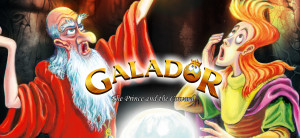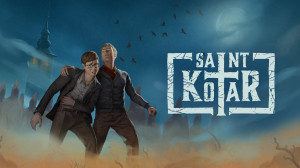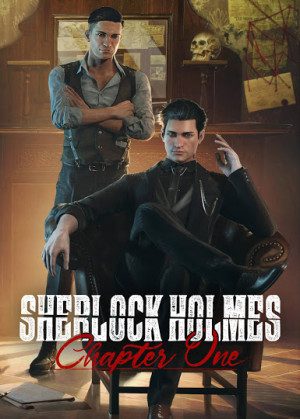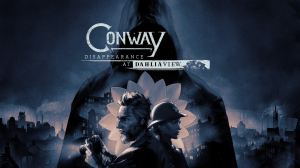Review for Moncage
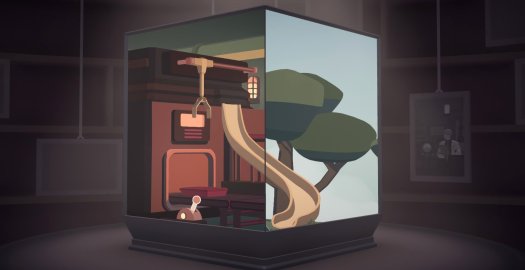
I wish I could tell you I knew right off the bat that the title Moncage is a portmanteau of “montage” and “cage,” but it took me longer than it should have. (I was thinking maybe “monkey cage,” but the game is decidedly free of furry simians.) I fared a little better with the name of the developer: Optillusion. It’s not that the game designers just happen to be really into wordplay. It’s that their unique debut offering is about forming similar connections, only based on shape, color, and perspective rather than linguistics. As you rotate a box containing lovely cel-shaded 3D vignettes, you’ll shift the viewpoint to create a visual continuity between otherwise dissimilar objects in different scenes, and by doing so you advance a wordless story of father and son. With so much emphasis on the innovative puzzle mechanics, the characters and their tale seem to fade into the background, especially if you miss the optional content, but there’s still a lot of enjoyment to be found in the spectacle.
As the game opens, you see before you a glass box sitting on a table beneath a spotlight in an otherwise dimly lit room. The view zooms in on it, within which sits a camera. This box, as it turns out, contains the entire game, and the focus never cuts away for the duration of play. During some very brief tutorializing, you’re asked to make your first connection: through one face of the cube you see a suitcase containing multiple children’s books and playthings, including a toy car. As you click and drag to rotate to an adjacent side, you discover the exterior of some kind of factory, in front of which sits a truck connected to a trailer. When you rotate the box so that both scenes are in view, you can line up the front of the car to the back of the trailer, forming a dump truck that then backs up and drives towards the factory, transitioning you to the next scene.
If you’ve tried the Buried Signal game Gorogoa, Moncage plays with similar ideas of manipulating multiple scenes to make connections, but adds a new dimension—literally. As you click and drag to rotate the box, each of the four sides and the top serve as windows into a different 3D tableau, sometimes set in the same general location, but often scattered across time and space, representing some important place in the characters’ lives: a lighthouse, a military camp, and an amusement park, to name a few. Progression through these scenes involves visually connecting two (or more) objects, buildings, or even landscapes, each from a different scene. Doing so creates an implied physical link, opening up new possibilities. A sliding metal door on the floor may be blocked by boxes in one scene, but combining it with a broken bridge in another location allows it to move freely, giving you access to what’s underneath and helpfully reconnecting the bridge in the process.
As you progress further, the puzzles aren’t quite that straightforward, and the results of your connections are difficult to predict. When you join a balance scale on a desk with an oil pumpjack in the ocean, they both pivot in tandem, and the pumpjack, well, pulls down the sun and turns day to night. Naturally. Even though this is, quite literally, moon logic, that’s nothing much to worry about. Your job is to find the optillusion—er, optical illusion, and the game will turn that into some kind of magic, and it really is a delight to see what new tricks it has continually up its sleeve.
The challenge ramps up with five different scenes, each with multiple points of focus from which you can zoom in and out, and various objects within each scene that can be linked, as well as other interactive elements like buttons to be pressed or switches to be flipped. The order of your connections, or factors like color, lighting, and timing, all play a role in the later stages, and there are plenty of fun perspective tricks to marvel at. Most of it is at a relaxed pace, but there is one vignette in which you need to make several connections in relatively quick succession across multiple sides of the cube. It’s not especially taxing, though, and feels rewarding when you manage to complete it.
These later areas can be especially tricky when you aren’t sure what exactly needs to be done to trigger the next event, and you don’t know whether you’ve found all the connections that can be made in a particular set of scenes. Fortunately, the game includes a well-crafted, multi-layered hint system that helps keep things moving. The first layer is triggered with the space bar, and highlights all the points of interaction, places where you can zoom in, and objects that are involved in a connection. In this latter category, the brighter objects are ones that need to be connected for the current puzzle, and the dimmer objects will need to be linked at some point in the future.
I found this feature to be a key part of my enjoyment, because any attempt to play without it ultimately devolved into the equivalent of the pixel hunt, with me wiggling the box around in tight circles in search of any connection I might have missed. And even knowing which objects can be joined still leaves plenty of challenge in figuring out where exactly the connection is, what needs to be done to achieve it, and what to do once the link is made. Which is where the second layer of hints comes in: through the help menu, you can get text-based hints one at a time, and if even those prove unclear, you can watch a video showing exactly what must be done. Even though you have to wait a certain length of time on any given puzzle before you’re allowed to look at these hints, it’s clear that the developers don’t want their players to feel stuck, and I admire the effort made towards greater accessibility.
What isn’t quite as accessible is the story being told. Although the locations are all places drawn from the lives of a man and his adopted (I think) son, you wouldn’t know that just by looking at the tableaus. There are no people in any of them, save for a few news anchors on TV screens, and the objects themselves are often general enough that they don’t reveal much on their own, although the juxtaposition of wartime imagery with much more peaceful and even childlike scenes evokes some intrigue. To get any real sense of narrative, though, you’ll need to find twenty-eight photos scattered throughout the game, lying inside drawers or tucked away behind other items.
Finding these pictures is entirely optional. You don’t need them to get to the end of the game—well, at least to an end of the game (more on that shortly). By the time I reached the credits the first time around, I had managed to miss six or seven photos, leaving some gaps in my understanding of the story, which left me with a faulty interpretation of the last few events. Even if you manage to find all the images, they’re not in chronological order, requiring you to pay attention to visual details to sort out who and what is being represented, and when and where they take place in the overarching narrative. There are still some details I’m unclear on, and a glimpse at online forums suggests I’m not alone.
Still, what’s there in the photos, however fragmented and vague, does offer some welcome context, and it hints at a story of war and power, love and loss, and the way our most difficult memories can trap us in cycles of pain and regret. It’s heavy, but because of its piecemeal nature, it lacks the emotional resonance these themes would normally elicit if more focus had been given to fleshing it out. There’s a “true” ending you can unlock if you manage to find all the photos, but it requires—for reasons I’ll leave players to discover for themselves—that you play through a slightly altered version of the game a second time, solving a few more meta-puzzles, before finally giving you this resolution. There’s a nice twist there, adding additional clarity to what’s going on, but I still found I wasn’t quite invested enough in the characters for it to be an especially memorable finale, though I did enjoy seeing some additional character animation, breathing a bit more life into the otherwise still shots of the nameless, faceless (literally) personas.
Regardless of how much you get out of the story, the sights and sounds of Moncage set a great atmosphere. Each vignette is artfully crafted and pleasant to look at, with relatively simple but smoothly animated cel-shaded models cast in muted but colorful tones. In some scenes you’ll be greeted with warm and familiar sights like a lighthouse or a Ferris wheel, while others depict darker subjects like a weapons factory or a bombed village. Coupled with the calming ambient music of the group Berlinist (who also did the music for Gris, if that tells you something), the prevailing tone is pensive, and at times melancholy, but largely peaceful, despite some of the subject matter.
A short experience at only two or three hours (with liberal use of in-game help, at least), Moncage is still packed with innovation and artistry, a puzzle box of visual wonders and clever tricks. It’s a treat to look at and tinker with, discovering the connections to be made from object to object, and with a helpful hint system to keep you from getting stuck, but the obliquely told story reminds you that you’re only on the outside looking in, kept at arm’s length from the emotional weight of the characters’ tale. If you can look past that, then it comes highly recommended as it really is a fun adventure, or should I say, “funventure.” … No?
WHERE CAN I DOWNLOAD Moncage
Moncage is available at:
We get a small commission from any game you buy through these links (except Steam).Our Verdict:
The storytelling is a little vague and lacks emotional punch, but if you’re looking for some innovative mechanics and visual artistry, Moncage’s perspective-based puzzles set in colorful cube vignettes are a marvel to experience.
You don't want to miss these articles
Adventure Gamers Community
Community reviews for more Adventure Games (randomly selected)
Review of Gabriel Knight 3: Blood of the Sacred, Blood of the Damned
Rating by Arial Type (May 21, 2012)
Review of Gabriel Knight 3: Blood of the Sacred, Blood of the Damned
Rating by Arial Type (May 21, 2012)










